There are so many different types of basses, from active to passive electronics, switchable pre-amp, passive pickups and active electronics and inversely proportional or equal… enough to easily mislead beginners! Here is a little guide to help you see a little more clearly and choose the bass that best suits YOU!
Passive basses!
Let’s start with the passive bass. Here the pickups and tone control are “passive”, meaning nothing is boosted and you can’t boost the frequencies. The tone control is just a low-pass filter that allows the high frequencies to be gradually reduced. The best-known examples of this type of bass are the Fender Jazz and Precision basses.

The benefits : You get dynamic sound that feels direct and immediate. You’ll also never have problems with a dead battery because none are needed: it’s a simple, reliable circuit that can’t go wrong.
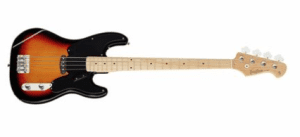
Cons : You can only modify the sound to a limited extent. Also, with long cables you always lose some of the treble, which is due to the high impedance of the passive electronics and the capacitance of the cables. However, this problem can be solved by using an external buffered preamplifier. This is connected to the bass with the shortest possible cable. Only then does it continue with a long cable. But then you are pretty close to the next variant.
You are currently viewing a placeholder content from YouTube. To access the actual content, click the button below. Please note that doing so will share data with third-party providers.
Basses with passive pickups / active electronics
The next variant is a bass with passive pickups and active electronics with active EQ (tone control). This combination has proven ideal for most applications over the years and can be found in virtually all electric basses today. Although the pickups are passive, the integrated electronics are active and therefore require a battery.
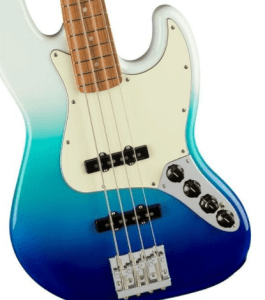
This variant retains most of the advantages of the passive circuit, in particular the dynamics. What’s more, with the active tone control, you can not only lower individual frequencies, but also boost them, allowing for a wide range of sonic variations. On many basses of this type, you can also turn the electronics off completely, giving you a traditional passive bass.
The advantages : the sound is not lost even with longer cables, and you can drastically change the sound of the bass with the on-board electronics without even touching the tone control of the amplifier.
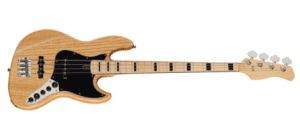
Cons : You need a battery and you have to make sure it’s full. You should also remember to unplug the cable when you put the instrument down, otherwise the battery will run out quickly. Another problem could arise with effect pedals: some are not designed for the high levels that active electronics can offer. This can therefore lead to distortion, especially if these pedals do not have gain control, but this is really the exception.
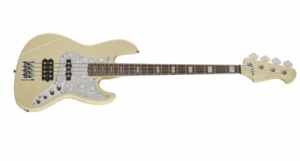
Bass with active pickups
The last variant that we would like to introduce to you is equipped with so-called active pickups. Here, the preamplifier is integrated into the pickup and must also be powered there. Without this suitable preamp, these pickups would have a very low output level. The most well-known representatives of this genus come from the company EMG. Their pickups deliver more bass and treble and also more compression than passive pickups.
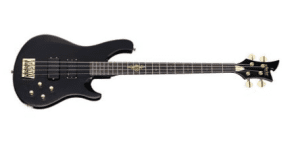
Pros : You get relatively little background noise. Thanks to the low impedance, no treble is lost even with longer cables. These pickups also deliver a wideband tone ideal for modern styles like metal or fusion.
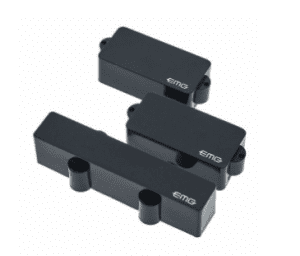
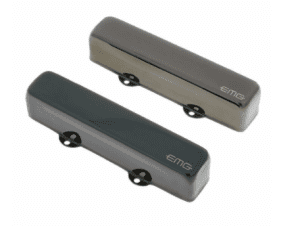
Cons : Again, you have to be careful with batteries, and like active preamps, there can be distortion issues with some effect pedals.
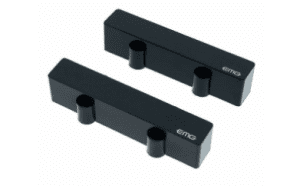
Possible conversions:
But can you convert your passive bass to active? Can passive electronics be replaced by active electronics? It’s actually quite simple. All you have to do is find the right pickup or active preamp for your bass. At EMG, for example, there are active pickups in a wide variety of sizes and formats for all types of basses, and manufacturers such as Sadowsky, Glockenklang or Aguilar produce excellent preamps and tone controls for the toughest basses.
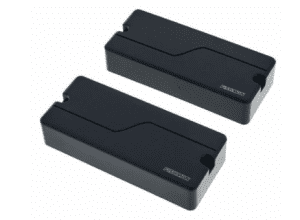
Of course, you need space in the bass not only for the electronics, but especially for the battery. This may mean that you need to mill out an extra compartment, which isn’t necessarily straightforward if you’re not too handy and are afraid of damaging your cherished instrument.
Another point to consider when converting from passive to active bass is the diameter of the holes for the potentiometers (potis); this may also need to be reworked. And finally, the poti buttons must fit on the axles. Some potis are 6 mm in diameter, others ¼ inch thick, and the wrong knobs may not even fit on the axis. You should also know a bit about soldering – with a few exceptions, as some companies, such as EMG, offer complete no-fuss packages where all the connections are pluggable (no soldering required).

Are you now closer to choosing the right bass for you? Let us know, in the comments, if you have any questions or suggestions. Cheers!







Comments 1